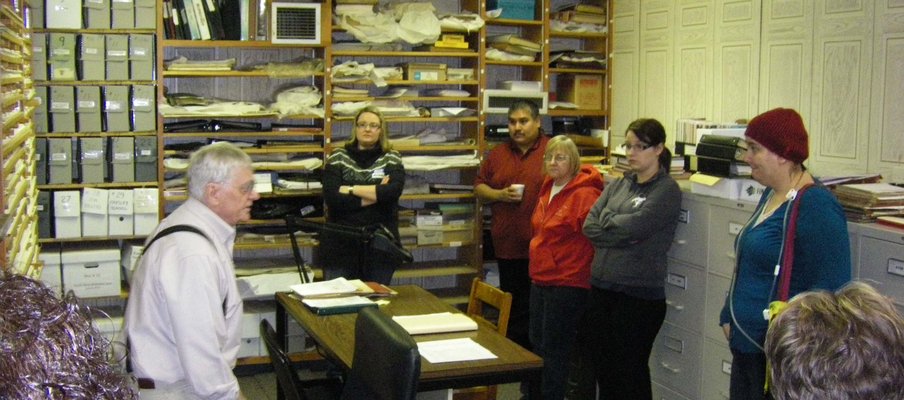
Prince Albert Historical Society and Treaty Education
In this issue
 Engage - Volume 2 Issue 4 Summer 2012
Engage - Volume 2 Issue 4 Summer 2012
Related Programs
Teachers from local school divisions from across the curriculum and grade levels participated in the two- day workshop to collaboratively create three lessons plans in a given subject and grade level that supported Treaty and Aboriginal education.
The Prince Albert Historical Society understands that passing on a complete history and current reflections about Treaty education in Saskatchewan is important.
Early this year, the Society began planning the Treaty and Aboriginal Education Project - a cross-curricular project organized in partnership with local school divisions, and the Saskatchewan Urban Native Teacher Education Program (SUNTEP). The partnership worked on creating an Aboriginal education resource that will be available to educators and their students when visiting the Prince Albert Historical Museum.
“The Society recognized that classroom teachers were mandated to provide a Treaty and Aboriginal component in their instruction,” says Harris May, secretary/ treasurer, Prince Albert Historical Society. Lesson plans have been organized into a multi-grade and subject resource binder available to educators to support museum visits.
“We had the opportunity to assist these teachers in making better use of our artifacts and informing the students that our organization exists to assist them.” Lesson plans have been organized into a multi-grade and subject resource binder available to educators to support museum visits.
“In preparing for the program, we realized that there is limited original artifact and archival material available for the classroom teacher to use,” says May. “Schools are providing the best Treaty and Aboriginal instruction that is currently possible. What schools are lacking is the resources for them to use during their instruction,” she explains. “This program provided local instructors with knowledge of our collection, information on how to find items in the collections, and how these items relate to the education modules being presented to the students.”
Teachers from local school divisions from across the curriculum and grade levels participated in the two- day workshop to collaboratively create three lessons plans in a given subject and grade level that supported Treaty and Aboriginal education. Two project leaders were brought into assist with the program. Michelle Taylor, an Education Program Coordinator with a degree in Anthropology and a partial B.Ed. degree, and Kurtis Hamel, a board member at the Society who graduated from SUNTEP and has extensive experience in teaching, as well as project management involving producing Métis-specific resources to support the Saskatchewan Education Curriculum. Both project leaders worked with teachers to ensure that the plans were aligned with Saskatchewan curriculum and the Office of the Treaty Commissioner Treaty Education Curriculum.
The first lesson is a pre-museum visit plan to prepare students for the visit. The second and third lessons incorporate tangible activities that allow students to handle artifacts and to participate in hands-on activities that are to be implemented while visiting the museum.
“Instructions on how to use an artifact, or archival information posted on the Internet, and the opportunity to read the archival records and identify with older generations are but a few of the hands-on learning opportunities that are available at the museum,” says May.
The project’s vision is to provide Aboriginal educational opportunities to educators and their students, provide hands-on learning opportunities at the Museum, and provide meaningful Aboriginal education resources that support Saskatchewan curriculum and inquiry-based learning. “By providing access to the collection with the assistance of educators, we hope to assist in providing knowledge and pride in our multicultural heritage. We hope to see increased social teachers work collaboratively with workshop facilitators to create three lesson plans focusing on treaty education. Interaction and understanding between cultures. We hope this project will nurture an appreciation for the work done in museums and archives that shape and expand the knowledge of our heritage,” she says.
The Society received funding for this project through SaskCulture’s Multicultural Initiatives Fund. The Society is governed by a board of directors and 16 volunteers.
It currently has 86 members, 36 of whom volunteer in various capacities. The archive now contains over 325,000 images and documents and 12,000 artifacts. The Society provides tours of its museums and city, outreach to senior homes and service clubs, and research for visitors and historians. It has a long history with artifacts dating back to 1886. This year marks the centennial of the first aircraft to land in the city. The Society will be partnering with Prince Albert Tourism to host a centennial celebration of built heritage and aircraft this summer.

